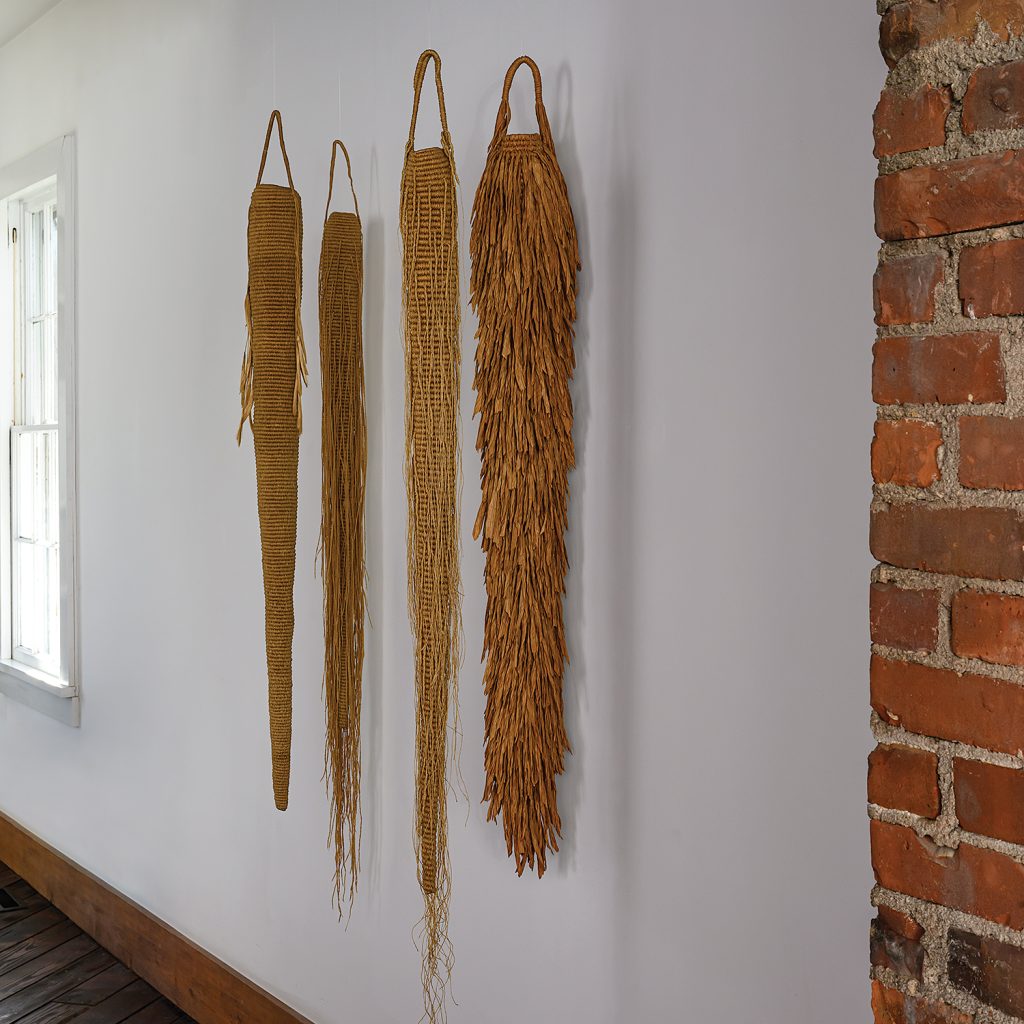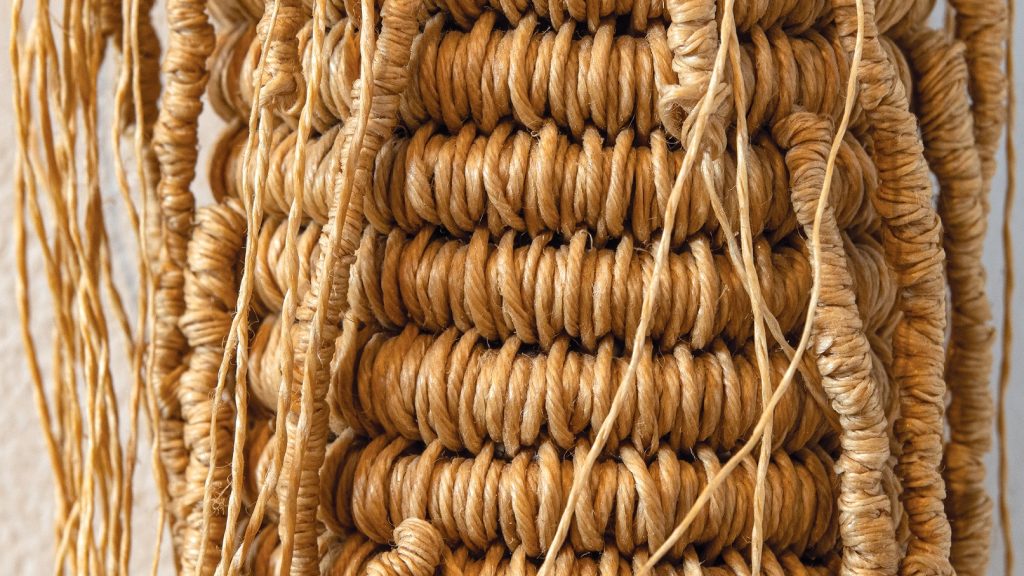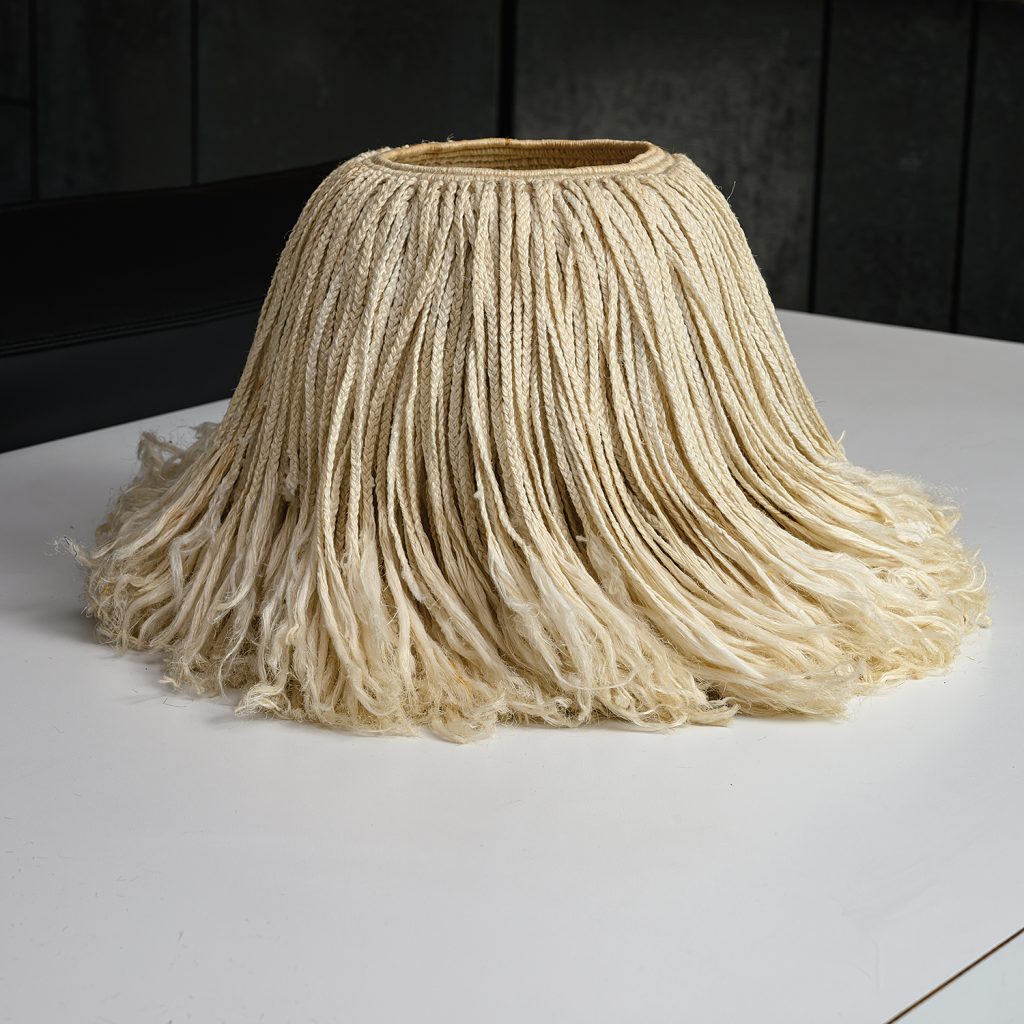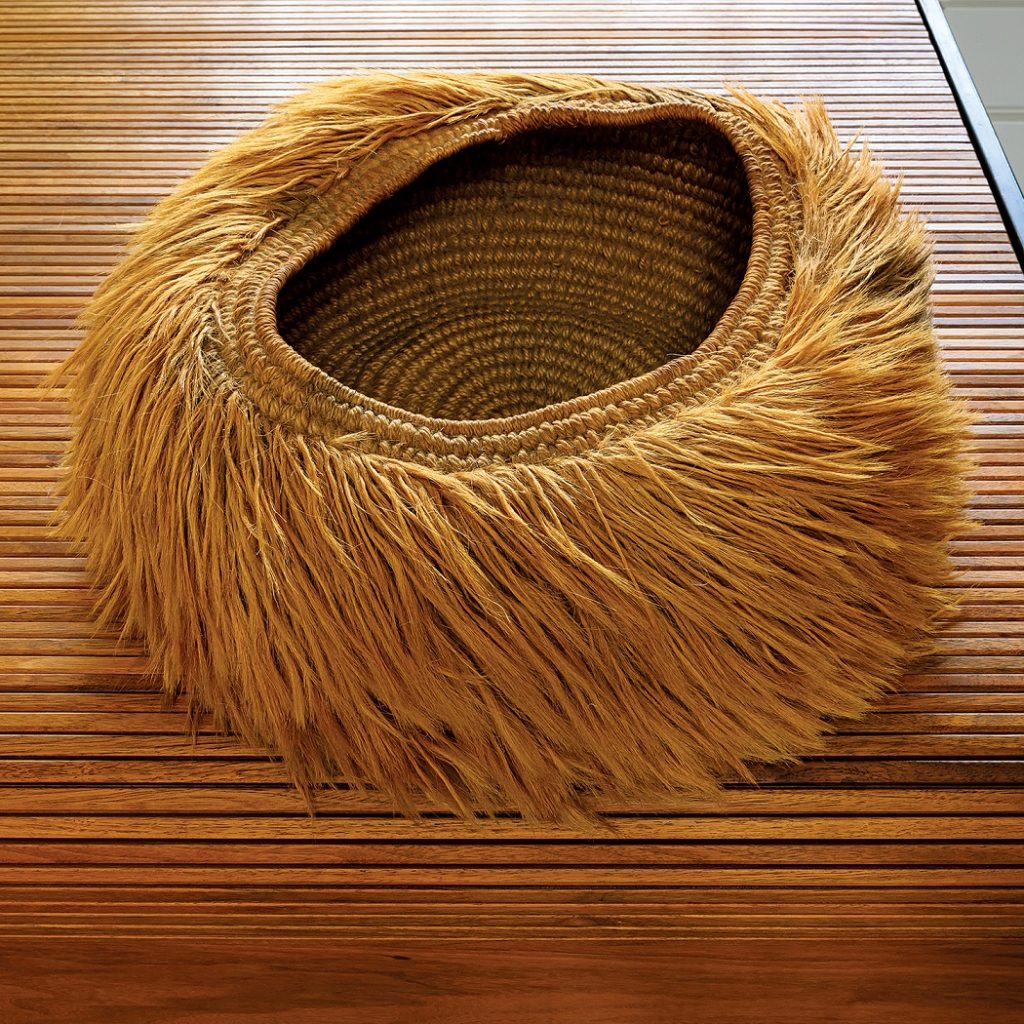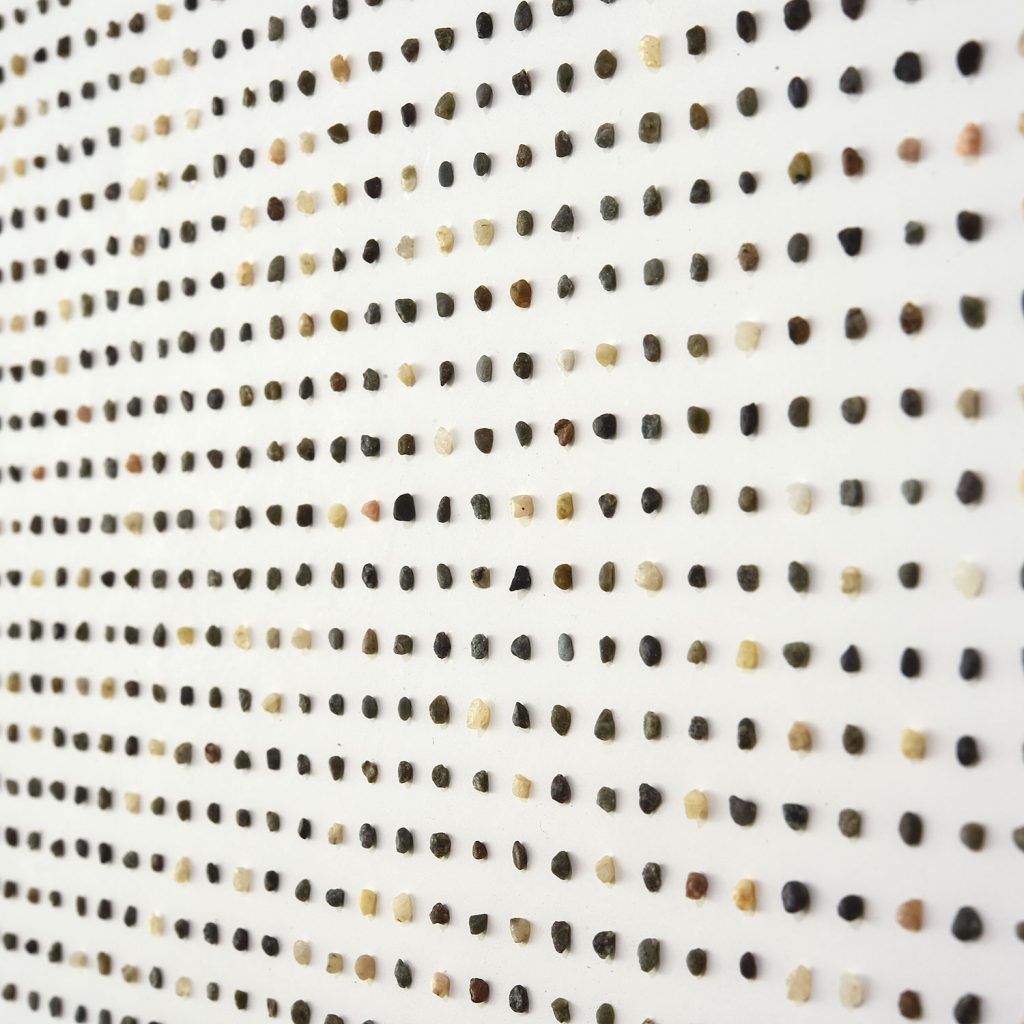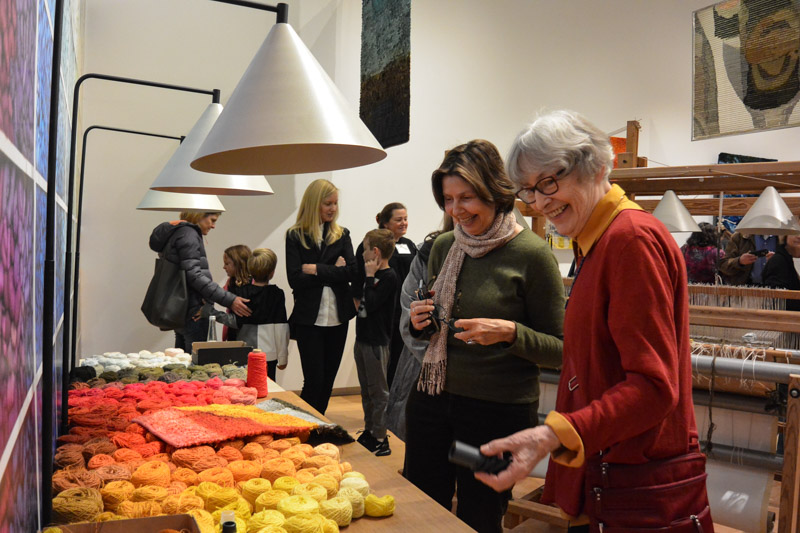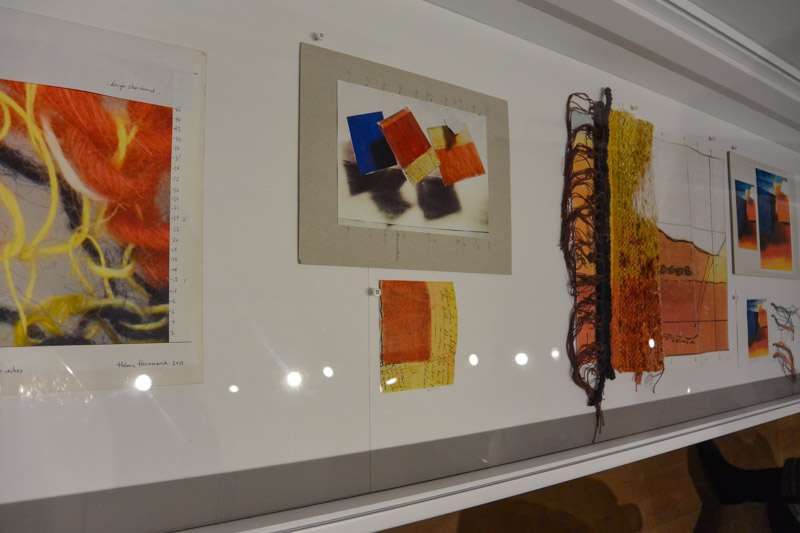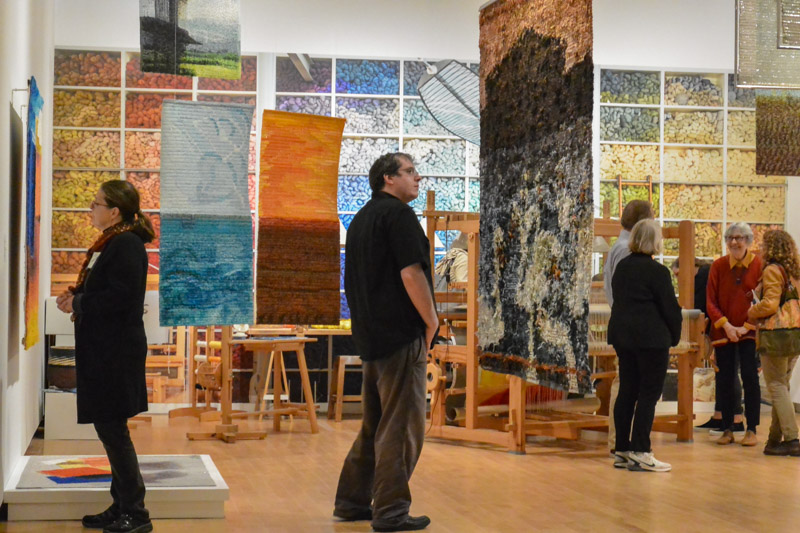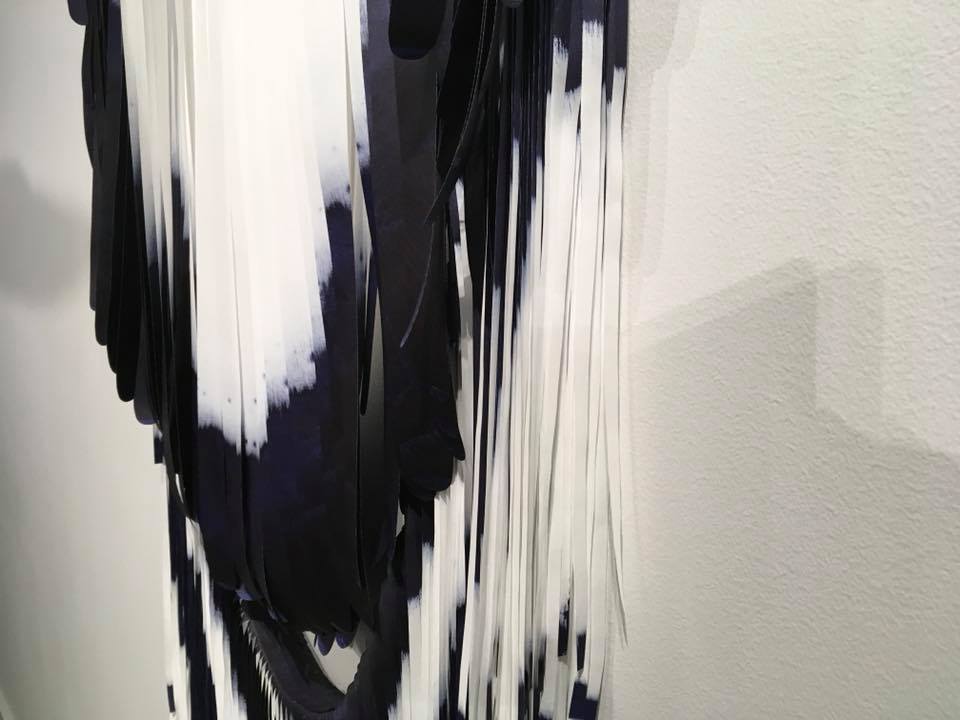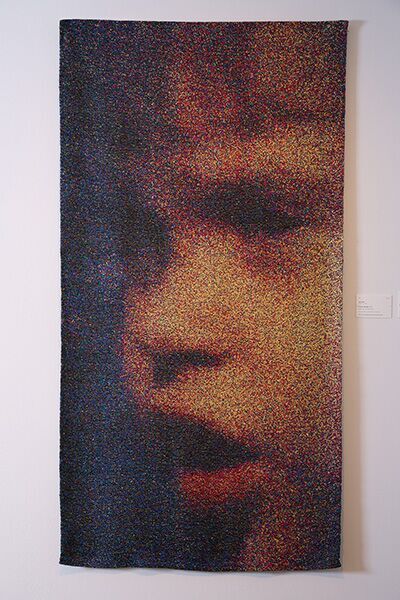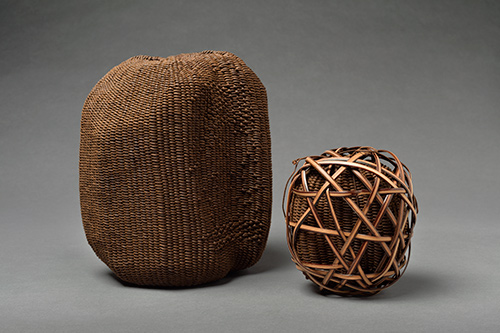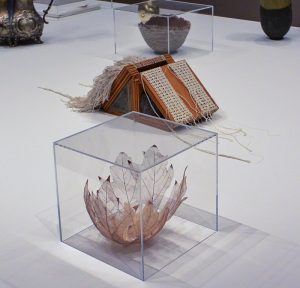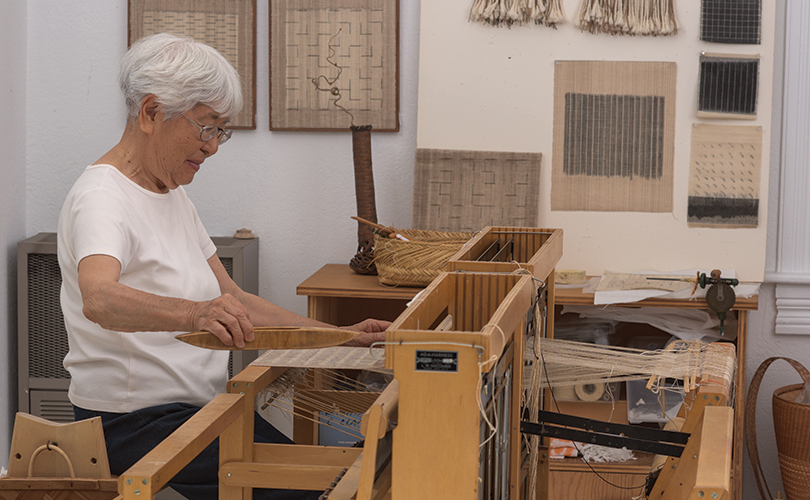
Kay Sekimachi has always had fans. She is known as a “weaver’s weaver” because of her technical mastery and extraordinary textile innovations. Her work has been recognized and exhibited widely since the 1960s, yet it has been 50 years since she has had a solo exhibition in New York. In 1969, Kay Sekimachi’s “‘sketchy’ and transparent” [ ] free-hanging, gossamer piece of nylon monofilament was included in the seminal Wall Hangings exhibition at the Museum of Modern Art in New York City. In 1970, there was a solo exhibition of Sekimachi’s monofilaments at the Lee Nordness Gallery in New York.
Fast forward to 2025, and Kay Sekimachi’s work is featured in a solo exhibition Kay Sekimachi: a personal archive at the Andrew Kreps Gallery (394 Broadway, New York, NY, through November 1, 2025, in conjunction with browngrotta arts). Kay’s work is also on exhibit at MoMA in Woven Histories: Textiles and Modern Abstraction (through September 13, 2025). And, as of September 24th, Sekimachi’s remarkable monofilament weavings are a part of Sixties Surreal, an ambitious, scholarly reappraisal of American art from 1958 to 1972 (through January 19, 2026), at the Whitney Museum of Art in New York.
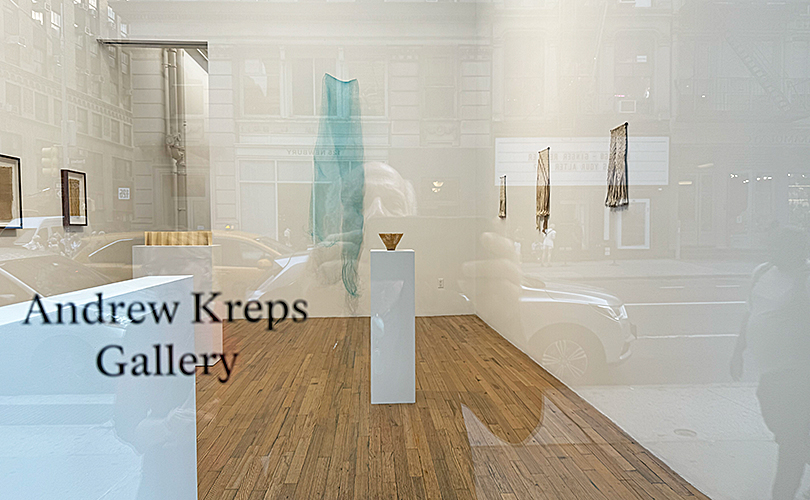
It’s official — September 2025 is Kay Sekimachi month — feted in New York and in California where she will turn 99 years old!
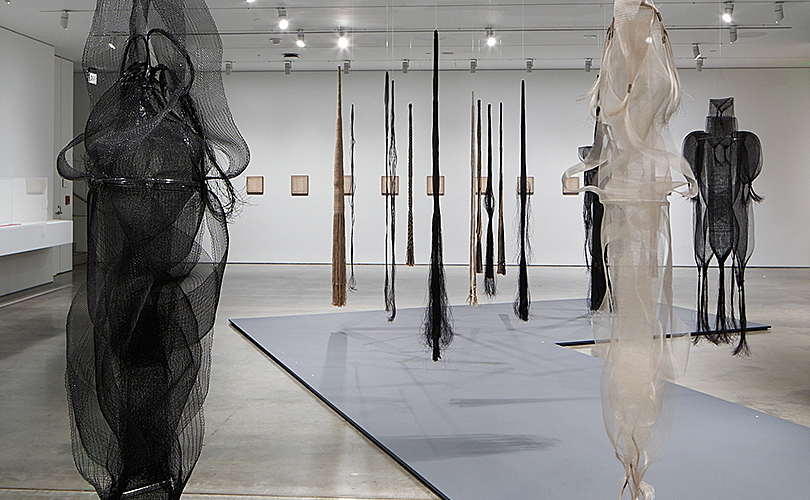
It’s a fitting capstone to Kay’s string of one-person exhibitions in other locales. 2001 saw Intimate Eye: Paper & Fiber Forms of Kay Sekimachi at the Mingei Museum in San Diego. In 2002, it was Kay Sekimachi: Fiberworks at the Craft and Folk Museum in Los Angeles. In 2009, Kay Sekimachi: Fiber Artist opened at the Sonoma Art Museum. In 2016, the year of Kay’s 90th birthday, the Craft and Folk Art Museum presented Kay Sekimachi: Simple Complexity and the de Young Museum in San Francisco presented Kay Sekimachi: Student, Teacher, Artist. 2018 saw the opening of Kay Sekimachi, Master Weaver: Innovations in Forms and Materials at the Fresno Art Museum in California. In 2021, BAMPFA in Berkeley, California opened Kay Sekimachi: Geometries. In 2023 and 2024, a comprehensive survey of her work titled Kay Sekimachi: Weaving Traditions was presented at the SFO Museum. And right now, Kay Sekimachi: Ingenuity and Imagination is on exhibit at the San Jose Museum of Quilts and Textiles.
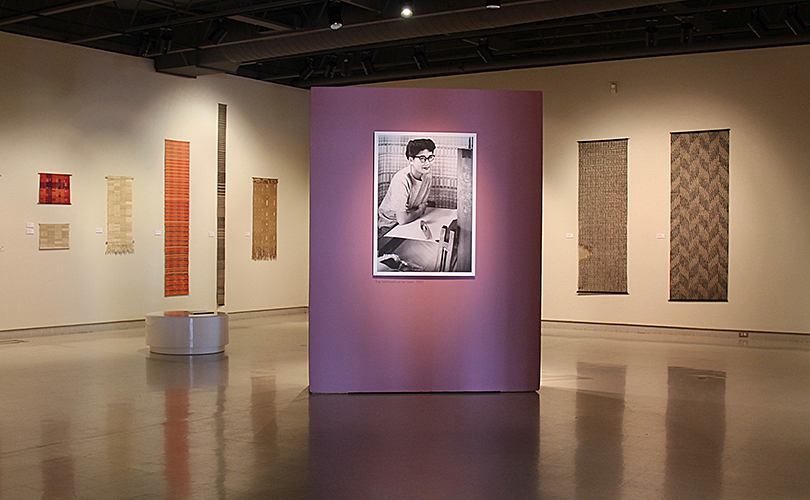
In between, there were significant group and two-person exhibitions. In 1969, her work appeared alongside Anni Albers, Sheila Hicks, Doyle Lane, Lenore Tawney, Peter Voulkos, and others in Objects: USA, which traveled after opening at the Smithsonian American Art Museum, Washington D.C. In 1971, there was Deliberate Entanglements at UCLA. In 1973, the 6th International Biennial of Tapestry in Lausanne, Switzerland. In 1986, FibeR/Evolution, Milwaukee Art Museum, Wisconsin. Then in 1993, the two-person exhibition, Marriage in Form: Bob Stocksdale and Kay Sekimachi traveled from California to Arkansas, Missouri, Florida, DC, New York, and Rhode Island followed by In the Realm of Nature: Kay Sekimachi & Bob Stocksdale at the Mingei Museum in 2015. Then Woven Histories debuted in Los Angeles in 2023, traveling to Ottawa, Canada, Washington, D.C. and now New York, New York followed by Skilled, Subversive, Sublime: Fiber Art by Women at the Smithsonian American Art Museum in DC in 2024.
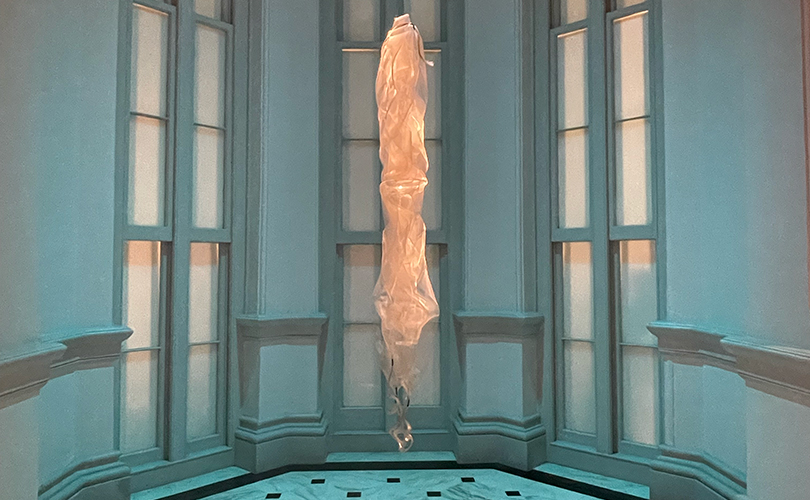
There is more well-deserved recognition to come — a major retrospective on Kay Sekimachi will open in the Summer of 2028 at the Museum of Fine Arts, Houston.
Watch for it and in the meantime visit Kay Sekimachi: a personal archive in New York if you can. (Here’s a short video to pique your interest.)

